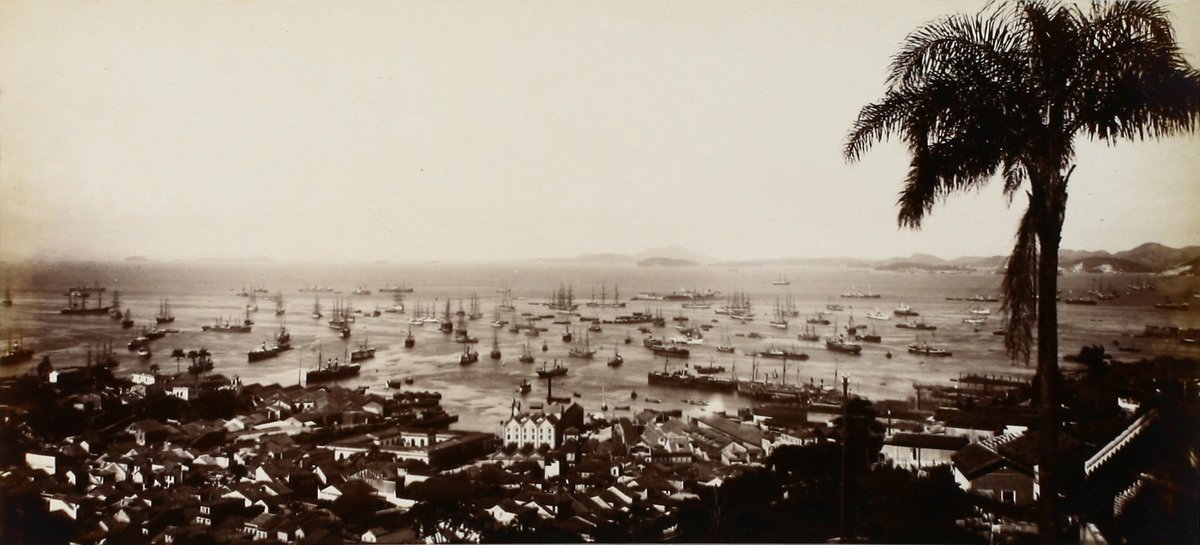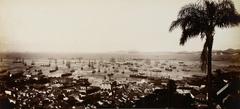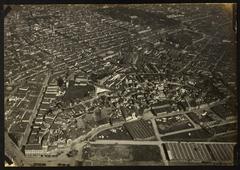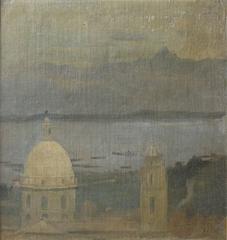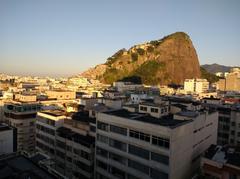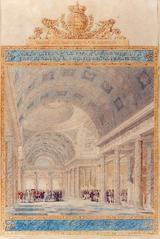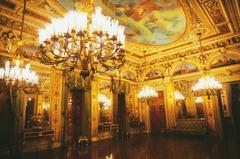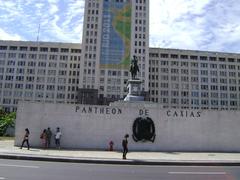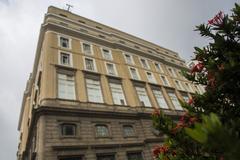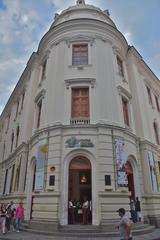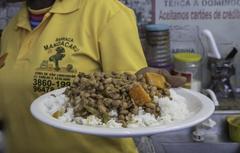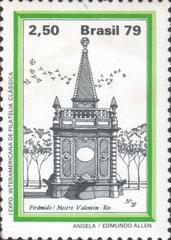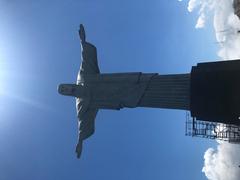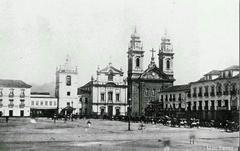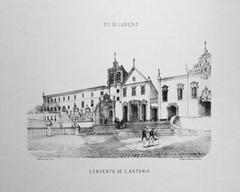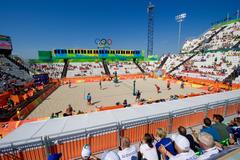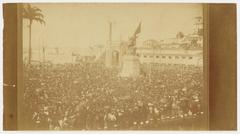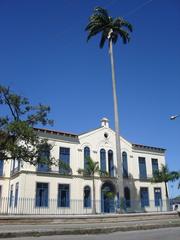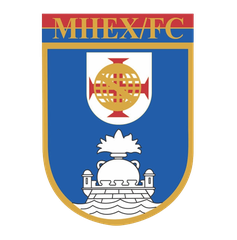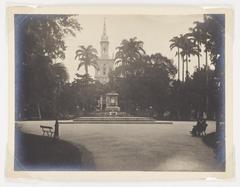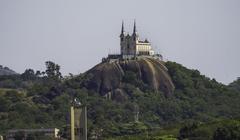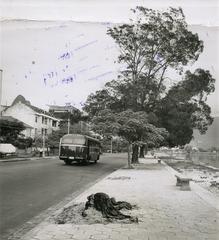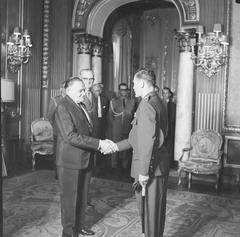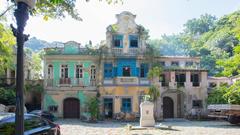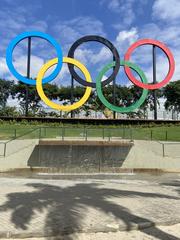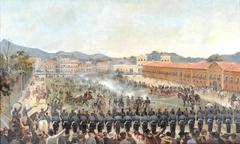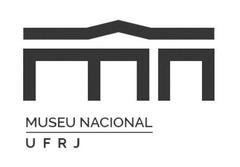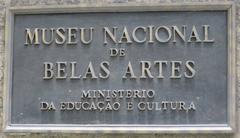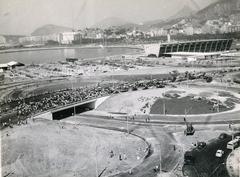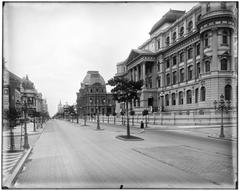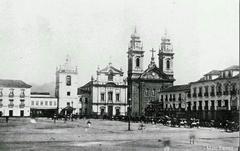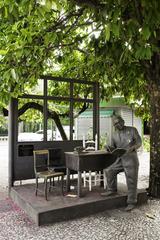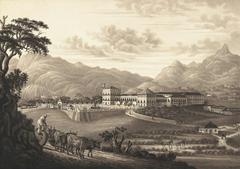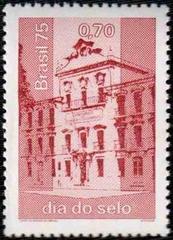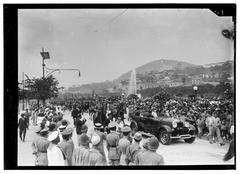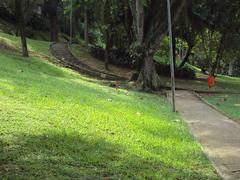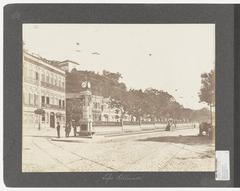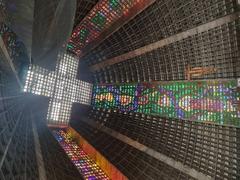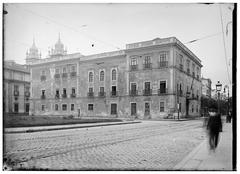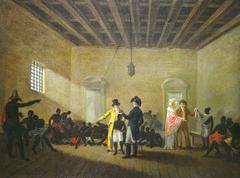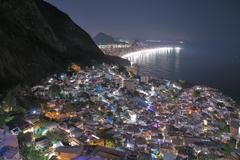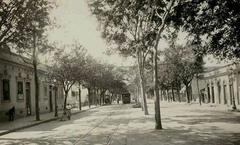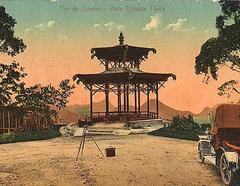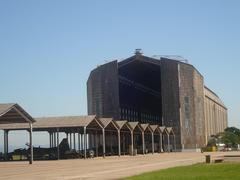Visiting Ladeira do Valongo: History, Tickets, and Tips in Rio de Janeiro
Date: 31/07/2024
Introduction
Ladeira do Valongo in Rio de Janeiro, Brazil, is a site of immense historical and cultural significance. Recognized as a UNESCO World Heritage Site, it stands as a poignant reminder of the transatlantic slave trade and its profound impact on African descendants in the Americas. From 1811 to 1831, Valongo Wharf served as the primary entry point for nearly 900,000 enslaved Africans, making it the most significant physical trace of the arrival of African slaves on the American continent (UNESCO). The site’s rediscovery in 2011 during urban revitalization efforts shed light on its historical importance, leading to its UNESCO designation in 2017 (Smarthistory). Today, Ladeira do Valongo not only serves as a historical monument but also as a space for remembrance and cultural reflection, particularly for the African diaspora. This comprehensive guide aims to provide visitors with essential information about the site’s history, visiting tips, and nearby attractions, ensuring a meaningful and educational experience.
Table of Contents
- Introduction
- Historical Background
- Visitor Information
- Special Events and Guided Tours
- Photographic Spots and Tips
- Conclusion
- Call to Action
Historical Background
Origins and Early History
Ladeira do Valongo, located in Rio de Janeiro, Brazil, is a site of profound historical significance, particularly in the context of the transatlantic slave trade. The area around the old pier, known as Valongo Wharf, became a focal point for the landing and trading of enslaved Africans from 1811 until 1831. This period marked the height of the slave trade in Brazil, with an estimated 500,000 to 1 million enslaved Africans arriving at Valongo Wharf (UNESCO).
Before the establishment of Valongo Wharf, enslaved Africans disembarked at Praia do Peixe, now Praça 15, and were traded in Rua Direita (today Rua 1º de Março) in the center of Rio de Janeiro. This practice was halted in 1774 by new legislation initiated by the second Marquis of Lavradio, Dom Luís de Almeida Portugal Soares de Alarcão d’Eça e Melo Silva Mascarenhas, the viceroy of Brazil. The legislation aimed to move the slave market away from the city’s main thoroughfares due to concerns about public health and decency (Wikipedia).
Construction and Operation of Valongo Wharf
The construction of Valongo Wharf began in 1811, specifically to facilitate the disembarkation of enslaved Africans. The wharf was strategically located in the port area of Rio de Janeiro, between the current Coelho e Castro and Sacadura Cabral streets. The site was designed to handle the large influx of enslaved people, with its lowest archaeological layers consisting of floor pavings in the pé de moleque style, attributed to the original Valongo Wharf (UNESCO).
During its operation, Valongo Wharf became the main entry point for enslaved Africans in the Americas. The wharf’s significance is underscored by the sheer number of Africans who passed through it—approximately 900,000. This made it the most important physical trace of the arrival of African slaves on the American continent (UNESCO).
Transition to Empress Wharf
In 1831, under pressure from England, Brazil officially banned the transatlantic slave trade. However, the trade continued clandestinely for several more decades. In 1843, Valongo Wharf was renovated and renamed Empress Wharf (Cais da Imperatriz) to welcome Princess Teresa Cristina of Bourbon-Two Sicilies, who was to marry Emperor Pedro II of Brazil. This renovation included significant changes to the wharf’s structure, overlaying the original Valongo Wharf with new pavements and facilities (Wikipedia).
Rediscovery and Archaeological Significance
The historical significance of Valongo Wharf was largely forgotten until its rediscovery in 2011 during excavations for the revitalization of Rio de Janeiro’s port area. Archaeologists uncovered the remains of both Valongo and Empress Wharfs, along with a large number of artifacts, including amulets and worship objects from Congo, Angola, and Mozambique. These findings highlighted the cultural and spiritual heritage of the enslaved Africans who passed through the site (Smarthistory).
The rediscovery of Valongo Wharf led to its inscription on the UNESCO World Heritage Site Tentative List, and it was officially designated a World Heritage Site in 2017. This designation acknowledges the site’s importance as a physical trace of a horrendous human history that should never be forgotten or repeated (UNESCO).
Cultural and Spiritual Significance
Valongo Wharf holds enormous historical and spiritual importance, particularly for African Americans and the African diaspora. It serves as a poignant reminder of the atrocities of the slave trade and the resilience of those who endured it. The site is not only a place of historical interest but also a space for remembrance and reflection. The annual “Washing of the Valongo Wharf” ceremony is one such event that honors the memory of the enslaved Africans who passed through the site (UNESCO).
Modern-Day Recognition and Challenges
Despite its historical significance, Valongo Wharf has faced challenges in terms of recognition and preservation. As of 2022, the Brazilian government had not erected a memorial at the site and had taken few steps to raise awareness of its importance. This lack of official recognition has been a point of contention among activists and historians who advocate for greater acknowledgment of the site’s historical and cultural significance (Wikipedia).
In recent years, efforts have been made to enhance the site’s visibility and accessibility. The area around Valongo Wharf has undergone significant renovations, including the development of the Porto Maravilha (Marvelous Port) project. This project aims to revitalize the port area while preserving its historical heritage. However, balancing urban development with the preservation of historical sites remains a complex challenge (Curbed).
Visitor Information
Opening Hours and Ticket Prices
Ladeira do Valongo is accessible to the public, but specific visiting hours can vary. It’s advisable to check the latest information from local tourism websites or contact the site directly for up-to-date visiting hours. As of now, there is no entry fee, making it an accessible historical site for everyone.
How to Get There
Ladeira do Valongo is located in the port area of Rio de Janeiro. Visitors can reach the site by public transportation, taxi, or rideshare services. The nearest subway station is Praça Mauá, which is within walking distance of the site.
Nearby Attractions
While visiting Ladeira do Valongo, consider exploring other nearby attractions such as the Museum of Tomorrow, the Rio Art Museum, and Praça Mauá. These sites offer a broader context of Rio de Janeiro’s rich cultural and historical landscape.
Special Events and Guided Tours
Annual “Washing of the Valongo Wharf” Ceremony
One of the most significant events held at Ladeira do Valongo is the annual “Washing of the Valongo Wharf” ceremony. This event honors the memory of the enslaved Africans who passed through the site and serves as a powerful act of remembrance and reflection.
Available Guided Tours
Guided tours are available and highly recommended for visitors who wish to gain a deeper understanding of the site’s historical and cultural significance. These tours are often led by knowledgeable guides who provide valuable insights into the history of Valongo Wharf.
Photographic Spots and Tips
Ladeira do Valongo offers numerous photographic opportunities. The historic pavings and the surrounding port area provide a rich backdrop for capturing the essence of this significant site. Early morning or late afternoon visits are recommended for the best lighting conditions.
Conclusion
Ladeira do Valongo stands as a poignant reminder of the transatlantic slave trade’s impact. Plan your visit to experience this significant historical site and honor its legacy.
Call to Action
Download our mobile app Audiala for more travel tips and updates. Follow us on social media for the latest news on historical sites.
References
- UNESCO World Heritage Centre. (n.d.). Valongo Wharf Archaeological Site. UNESCO
- Smarthistory. (n.d.). Memory and space at Cais do Valongo. Smarthistory
- Curbed. (2016, June 8). How Rio de Janeiro’s Valongo Wharf became a monument to the slave trade. Curbed
